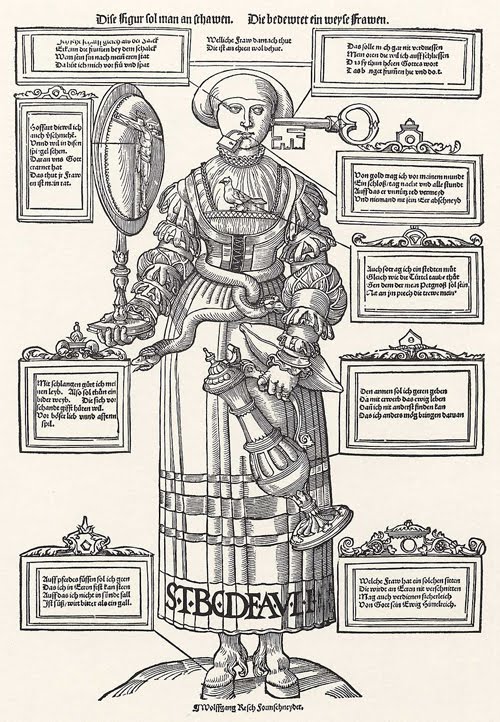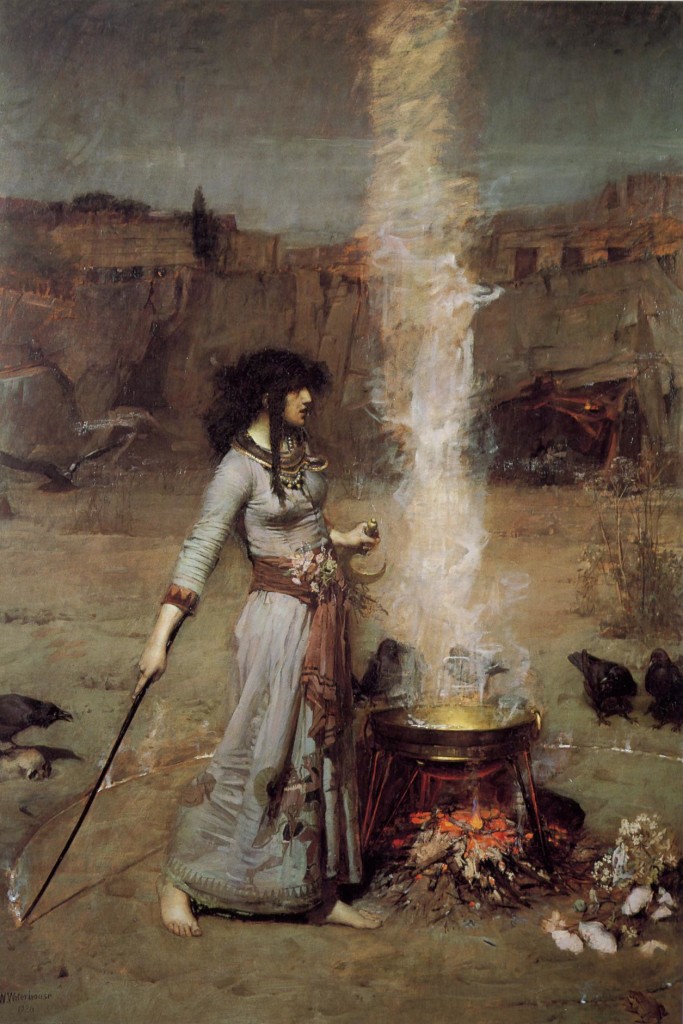It seems ironic that the Renaissance and later the Enlightenment should be the periods associated with the persecution of witches, a kind of phenomenon, a systematic cult that was invented out of thin air. it was the persecution of women, sexism, on a grand scale. A delusion that took a fabulous course; a disease created by its pretended remedy…
The Dark Ages were not all that dark. They were sensible about witches. To believe in witches or werewolves, said Saint Boniface in the eighth century, was un Christian. In the tenth century a Church dignitary declared night-flying a hallucination, and his declaration was accepted into the canon law. In the eleventh, the laws of King Coloman of Hungary refused to notice witches “since they do not exist.”

—The witch trials’ obsession with female sexuality reflects this puritanical attempt to control women’s lives. Tightening religious strictures and the new economic system complemented each other–they both attempted to bring the rebellious, hedonistic peasant population under control of Church and secular authorities. The witch persecutions were symptomatic of a new totalitarianism . —click image for source…
Of course, shepherds and peasant women continued to talk of them, as they had done in pagan times: we find sympathetic magic in Theocritus, werewolves in Petronius, anointment and night flying in Apuleius; and Saint Augustine, with his African credulity, did his best to preserve these peasant superstitions and fit them into his gigantic system. But in general the Church, as the civilizer of nations, disdained such old wives’ tales. They were the rubbish of paganism, which the light of the Gospel had dispelled. Even the Devil, in the Middle Ages, sank through familiarity into contempt. The Prince of Darkness became a village hobgoblin, dismissible with a formula.

—“Magic Circle” by John William Waterhouse, 1886—WIKI
And then, with the end of the Middle Ages, what a change! In the sixteenth century, the century of the renaissance, and the seventeenth century, the century of the New Science, all Europe seemed given over to witches. Scotland and Hungary, where they had hitherto been unknown, were suddenly found to be swarming with them. By their own confession, thousands of old women every night anointed themselves with “devil’s grease,” slipped through cracks and keyholes and up chimneys, and flew off to the witches’ Sabbath.
There they worshiped the Devil in the form of a stinking goat,danced around him amid macabre music,kissed him solemnly under the tail, and feasted on such viands as tempted their national imagination. When not thus engaged, these old ladies, it seemed, were busy sucking familiar spirits in the form of weasels, moles, bats, toads or other convenient creatures; they were compassing the death of their neighbors or their neighbors’ pigs; they were raising tempests, causing blights, or procuring impotence in bridegrooms; and as a pledge of servitude they were constantly having sexual intercourse with the Devil, who appeared to she-witches as an incubus, to he-witches as a succubus.
What Edward Gibbon called “the chaste severity of the Fathers” was much exercised by this last subject, and no detail escaped their learned scrutiny. What was the Church to do when faced with this alarming epidemic of witches? What indeed except discover, test, and destroy them? To discover them, village hatred must be exploited. To test them,one had to be content with circumstantial tests. Of these, fortunately, there were plenty. When the witch was thus identified, the next thing was to make her confess. ( to be continued)…
ADDENDUM:
(see link at end)…Interestingly, it can be argued that the persecution of witches was to some extent used by these separate factions as a form of propaganda, in that any successful campaigns against witchcraft by Protestantism or Catholicism could confirm either Catholics or Protestants as the champions of the “true” religion. One example that seems to reinforce this argument is that there were many cases of supposed possession in Europe during the sixteenth century.
For example, German Jesuits in the later 16th century used exorcisms to validate the power of the Catholic Church. Also, the exorcist john Darrel claimed in the 1590’s that the Baptists “do what they ca
so that the Protestant church would not get credit for performing successful exorcisms.This culminated in a heated propaganda battle between the two factions. The relevancy of this is that the “possessions” often led to allegations of maleficarum, or witchcraft. Indeed, in Germany, France, and England the activities of Darrel led to a series of witch trials and at least two executions.
Accusations of witchcraft also occurred within religious factions. For example, Protestants popularly regarded Catholicism as the source of witchcraft, and this accusation was likewise directed at the Protestants. Popular belief denoted that they suffered from satanic delusions, and Luther was even regarded by some members of the Catholic Church as being devil spawn. Read More:http://www.h2g2.com/entry/A20296299





 COMMENTS
COMMENTS